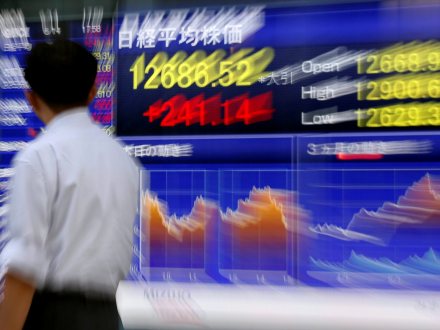By Craig Erlam
European stock markets are making modest gains at the end of the week, but broadly remain in consolidation, as has been the case throughout.
We appear to have reached a point where the initial shock of the war in Ukraine has passed and markets have corrected to a point where the economic risks are deemed to be priced in. In the absence of any significant developments, markets have come to a relative standstill and could remain that way until we see some progress.
Volatility remains in the commodity space which is contributing to the day-to-day fluctuations in equity markets.
Higher commodity prices mean a further squeeze on the world economy this year and more inflation at a time when central banks are already accelerating tightening plans after falling behind the curve.
The flattening of the yield curve means we’re once again talking about recession risks and whether we’re about to see inversions that typically signal one is on the way.
The Federal Reserve believes the US economy is strong enough to withstand multiple rate hikes this year, perhaps even some supersized, and the curve seems to agree. That could change if energy prices see further surges which could tip the economy over the edge.
Watching Ukraine
Developments in Ukraine are also being monitored closely from negotiations with Russia, to sanctions and the risk of escalation. The West continues to warn Putin about the use of biological, chemical or nuclear weapons and said there would be a response.
There were no details on what that would entail, but NATO has repeatedly stated its opposition to direct interference. Even they may have a red line, though.
The fear is that the Kremlin feels backed into a corner as a result of the invasion not proceeding as planned and facing far more severe sanctions than it had anticipated.
With more being drawn up and the EU slowly turning away from Russian energy, the consequences of the invasion will be substantial, starting it seems with a two-year recession and soaring inflation.
As part of the EU reducing its reliance on Russian energy, it announced a deal to increase US LNG imports by the end of the year by at least 15 bln cubic meters.
This is only a fraction of the gas it receives from Russia, but is a step in the right direction as talks continue with other producers that will enable it to fill up stores ahead of next winter, and eventually end the relationship in another blow to the Kremlin.
Oil edges lower
Oil prices were slipping for a second day on Friday as it’s clear that the EU is not about to agree on a ban on Russian oil imports, no matter how much it would like to follow the US actions.
While it would be devastating for Russia, it would also be so for European countries as there isn’t exactly an abundance of affordable oil out there. A few countries are particularly reliant on Russia and will need time to change that.
The market is going to remain extremely tight though and the loss of a million barrels per day of crude from Kazakhstan via the Caspian Pipeline Consortium (CPC) doesn’t help matters.
The EU failing to agree a ban may provide temporary relief, but it doesn’t change the path of travel which is strong demand and declining supply.
And there’s little indication of that improving, with the rest of OPEC+ happy to turn a blind eye in the absence of Kremlin support.
Gold steadies
Gold is hovering around $1,950 at the end of the week after hitting 10-day highs on Thursday. The gains over the last couple of days appeared to be driven by moderate risk-aversion in the markets and higher energy prices. Ultimately, the moves were relatively small compared to what we’ve seen in the past months.
The yellow metal will continue to be well supported against the backdrop of sky-high inflation and immense uncertainty. That doesn’t necessarily mean we’re heading for record highs.
But, as is the case more broadly, the main catalyst continues to be the constant flow of headlines which will continue to determine the path of travel for the yellow metal.
Bitcoin buoyed by oil and gas
In the latest twist in the crypto space, Russian lawmaker Pavel Zavalny claimed the country may consider accepting payment for oil and gas in bitcoin from friendly countries.
This should seriously be taken with a pinch of salt for a number of reasons. Not least Russia’s widely known opposition to cryptos.
Add to that the fact that one major ‘friendly’ export market is China, where bitcoin is banned. This is just a case of a lawmaker trying to appear calm about an extremely undesirable situation and play up the ease with which the sanctions can be circumvented.
In reality, this is a non-starter, and brings considerable risks as a result of the volatility that comes with cryptos.
It’s an interesting story though and it’s seemingly given bitcoin a bump back towards $45,500 where it’s once again seeing resistance.
I’m not sure avoiding sanctions imposed as a result of a horrific invasion that’s killed thousands of innocent people is what crypto purists had in mind. Nonetheless, these scenarios are typically bullish for the price, as we saw in the last month following reports of oligarchs using it for similar purposes.
Craig Erlam is Senior Market Analyst, UK & EMEA at OANDA
Opinions are the author’s, not necessarily that of OANDA Global Corporation or any of its affiliates, subsidiaries, officers or directors. Leveraged trading is high risk and not suitable for all. Losses can exceed investments.







